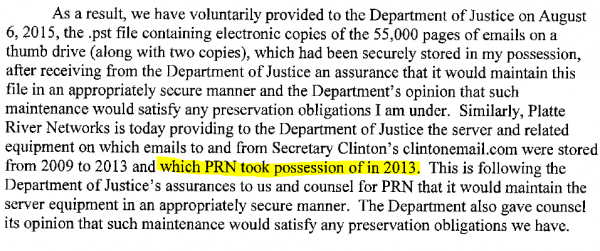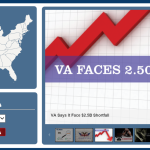CBS reported: You can’t golf all day.

President Obama packed plenty to read for his two weeks vacationing with his family in Martha’s Vineyard.

Here are Obama’s six summer reads, a mix of critically acclaimed fiction and nonfiction, obtained first by ABC News:
- All That Is, by James Salter
- All The Light We Cannot See, by Anthony Doerr
- The Sixth Extinction, by Elizabeth Kolbert
- The Lowland, by Jhumpa Lahiri
- Between The World and Me, by Ta-Nehisi Coates
- Washington: A Life, by Ron Chernow
Let’s examine one of them:

Between the World and Me and reviewed by the Christian Science Monitor has some interesting facts and demonstrates volumes of envy, blame and plight.
In his 1978 biography of James Baldwin, Louis H. Pratt called the eminent 20th-century African-American writer a man “concerned with the destruction of the fantasies and delusions of a contented audience … determined to avoid reality.” Baldwin was born poor in New York City and personally knew racial intolerance. With regard to race, Pratt’s Baldwin was a “disturber of the peace” – one who revealed uncomfortable truths to a society mired in complacency. Thirty-five years later, Nobel Prize-winning author Toni Morrison now invokes Baldwin’s legacy in praising Ta-Nehisi Coates’s powerful new memoir Between the World and Me: “I’ve been wondering who might fill the intellectual void that plagued me after James Baldwin died. Clearly it is Ta-Nehisi Coates.”

Coates, a national correspondent at The Atlantic, has, in “Between the World and Me,” crafted a highly provocative, thoughtfully presented, and beautifully written narrative concerning his own misgivings about the ongoing racial struggle in America. In this slender (176 pages) volume Coates is also, like Baldwin before him, set on revealing similar “uncomfortable truths” to 21st-century America. Coates’s prose is addressed to his 15-year-old son Samori. In the wake of all the recent tragedies involving black men and boys at the hands of police – Michael Brown’s death in Ferguson, Missouri in particular – Coates says he cannot help but fear for Samori’s life.
Writing ruefully and with a hint of resignation, Coates writes to Samori about the way that “those who believe they are white” have been essentially “pilfering” the bodies of African Americans throughout the course of American history. In the wake of these many recent and lethal confrontations between law enforcement and black Americans, Coates expresses little hope that there will be meaningful change any time soon. The Rev. Clementa Pinckney, slain with eight parishioners in a church in Charleston, S. C.; the alleged “suicide” of Sandra Bland in Waller County, Texas; and the death of Samuel DuBose at the hands of a University of Cincinnati police officer, are all just more grist for what Coates sees as a mill of misery, mistrust, and hopelessness.
Coates refers to the greater white American population as “Dreamers” – living in a “Dream” festooned with sentimental mythology such as “perfect houses with nice lawns,” “ice cream socials,” “the Cub Scouts,” “block associations,” and “Memorial Day cookouts.” In Coates’s mind, this mythology has clouded any real appreciation or empathy for those for whom the “Dream” is unattainable. As Coates writes to his son, “even your relatively privileged security can never match a sustained assault launched in the name of the Dream.” In Coates’s telling, there are just too many who have become victims of it: Michael Brown, Trayvon Martin, Tamir Rice, John Crawford, Jordan Davis, and Kajieme Powell, are just a few.
In one powerful passage, and in a direct appeal to those who would look away from the numerous black fatalities in recent years, Coates asserts: “America believes itself exceptional, the greatest and noblest nation ever to exist.… One cannot, at once, claim to be superhuman and then plead mortal error. I propose to take our countrymen’s claims of American exceptionalism seriously, which is to say I propose subjecting our country to an exceptional moral standard.”
Having grown up in West Baltimore, the son of William Paul Coates, a former Black Panther and Vietnam War veteran, Ta-Nehisi Coates (his hyphenated first name is the Egyptian translation for ancient Nubia, from which his family originated), was prodigious at reading and writing in his youth and subsequently attended Howard University – “The Mecca” – in Washington, D.C. As a teenager, Coates eagerly consumed the writings of historian and Howard professor Chancellor Williams, whose book, “Destruction of Black Civilization” became a revelation to him. This introduced Coates to the excesses of European colonialism and its disastrous effects in plundering the cultures and economies as well as the bodies of Africans and their countries.
Once at Howard, Coates was drawn to the vast African-American holdings of the Moorland Spingarn Research Center, where Coates’s father once worked. He would “draw out my pen, and one of my black-and-white composition books. I would open the books and read, while filling my composition books with notes on my reading, new vocabulary words, and sentences of my own invention.”
But while Coates was discovering himself, he also became disillusioned by the realization that those black thinkers and writers whose works he devoured at the library often were antagonistic to, and worked against, one another. The one intellectual Coates found close identity with at that time was Malcolm X.
“He was the first political pragmatist I knew, the first honest man I’d ever heard,” Coates writes. “He was unconcerned with making the people who believed they were white comfortable in their belief. If he was angry, he said so. If he hated, he hated because it was human for the enslaved to hate the enslaver, as natural as Prometheus for hating the birds.”
Coates then does a slow burn over another touchy subject – a quote attributed to the Nobel prize-winning writer Saul Bellow: “When the Zulus produce a Tolstoy, we will read him.” Coates found satisfaction in a quote by author Paul Wiley, who replied in kind, “Tolstoy is the Tolstoy of the Zulus.… Unless you find a profit in fencing off universal properties of mankind into exclusive tribal ownership.” As a result, Coates, who admitted error in having originally accepted Bellow’s remark as valid, at last repudiated it as “racecraft,” where, in effect, racism becomes race.
“The Struggle,” as Coates wrote to Samori, named for Samori Toure, who fought against French colonizers in Guinea during the 19th century, often “escapes our grasp.” He quotes Harvard law professor Derrick Bell, who called blacks “faces at the bottom of the well.” But Coates optimistically adds “But there really is wisdom down here, and that wisdom accounts for much of the good in my life. And my life down here accounts for you.”
Coates emphasizes that although blacks in America have endured the hardships of slavery – having been relentlessly “carried off and divided up into policies and stocks” – he has taught his son to “respect every human being as singular,” though that respect must also extend into the past. He writes eloquently about how “You cannot forget how much they took from us and how they transfigured our very bodies into sugar, tobacco, cotton, and gold.”
One moving event Coates relates involves the day he took his young son to see the film “Howl’s Moving Castle” in Manhattan. While exiting the theater, Coates’s dawdling son was angrily pushed on an escalator by a white woman. Coates became enraged and responded accordingly. He expresses personal shame for his loss of temper, noticing to his horror that Samori was intensely frightened by his reaction. Coates was enraged that someone had “invoked their right over the body of my son,” but also expressed regret that in seeking to defend his son, he had actually “endangered” him.
Perhaps the most emotionally wrought episode in the book involves the death of a young man with whom Coates had studied at “The Mecca” – Prince C. Jones, Jr., who Coates learns was killed in an altercation with a Prince George’s County, Virginia policeman who happened to be black, and who had a dismal record in his tenure on the force. Hearing that the unarmed Jones was struck with five bullets (of 16 shots aimed at his Jeep), Coates felt a need to seek out Jones’s mother, about whom he wondered, “How did she live?” Coates found her on the outskirts of Philadelphia in an affluent gated community.
Dr. Mabel Jones made a pact with a friend as a young girl that she would become a doctor and escape the difficult childhood she had lived under her sharecropper father. She subsequently matriculated at Louisiana State University on full scholarship and later served in the Navy.
Earning her medical degree, she specialized in radiology (she said she knew no other black radiologists) and rose to the head of radiology of her hospital. She told Coates that Prince (who she called “Rocky” in tribute to her grandfather, who went by “Rock”), was part of that “one third” of Howard students who were “tired of having to represent.” They were the ones who managed to break away to the suburbs, only to find that they “carried the mark with them and could not escape” – being patronized as “parables of diversity.”
Coates can hardly believe Dr. Jones’s remarkable stoicism in telling him about the night her son died and her control in the face of his having been “plundered.” Driving back after their talk, Coates found himself thinking of his son, of the Dreamers, and of the importance of continuing to struggle. “I do not believe we can stop them, Samori, because they must ultimately stop themselves.… Hope for them. Pray for them, if you are so moved.” It is an appeal to empathy and understanding that has fallen on the deaf ears of so much of America throughout its history.
Coates finishes powerfully, expressing the urgent need of this understanding, together with corrective action, in one stirring passage: “The Dreamers will have to learn to struggle themselves, to understand that the field for their Dream, the stage where they have painted themselves white, is the deathbed of us all.”
The message here is clear: Our national conscience must acknowledge, as difficult as that may be, that there remains a steel-hardened distance between black and white in this country, forged by past and present transgressions. But at the same time, there is the hope that it can be tempered by an appeal to an America that sees itself as “exceptional,” but has failed to extend that belief in exceptionalism to many of its citizens.
“Between the World and Me” follows other important writings by Coates, including his 2008 memoir “The Beautiful Struggle” and his 2014 Atlantic article, “The Case for Reparations.”
Much of what Coates writes may be difficult for a majority of Americans to process, but that’s the incisive wisdom of it. Read it, think about it, take a deep breath and read it again. The spirit of James Baldwin lives within its pages.


